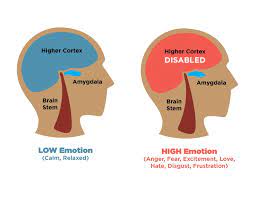In this article, I’m sharing three key practices that will allow you to manage effective workplace confrontations without the drama. Many studies have shown that ineffective workplace confrontations lead to poor morale and lower productivity. Getting workplace confrontations right is therefore a foundational skill for any leader.
Use The Paradoxes of Tai Chi in Workplace Confrontations
First, I want to talk about the paradoxes of Tai Chi. As a former Tai Chi master and second degree black belt, I learned many truths about confrontation. In tai chi, there are two important paradoxes. The first paradox is the softer you are, the stronger you are. And the second paradox is the more vulnerable you are, powerful you are.
So the key to confronting somebody else in the workplace is to be soft and vulnerable to make yourself powerful and strong. I will show you exactly how to do that. First, let’s dissect a confrontation and try to understand better what goes on in an uncontrolled confrontation.
Workplace Confrontations Are Intensely Emotional
Workplace confrontations are almost always intensely emotional. They provokes feelings of anxiety, anger, feeling disrespected, feeling ignored, feeling an injustice or unfairness, feeling betrayed or betrayal, oftentimes feeling sadness or grief, and shame or humiliation. Workplace confrontations are usually unplanned and unexpected, which results in an explosive emotional reaction. In such situations, the prefrontal cortex goes offline and the emotional centers of the brain activate.

When that happens, we lose our ability to think, we lose our control, and we are subject to the programming that we learned in childhood about how to respond to anger and aggression.
There Are Two Types Of Workplace Confrontation
There are two basic types of confrontation.
The first type of confrontation, which we’re going to talk about in this article is when you have to confront someone else.
The second type of confrontation is when someone confronts you, usually with a lot of anger. We’ll talk about that situation in another article. 7 Essential People Management Skills For The Rising Business Leader
So how do you go about confronting someone else? Someone has created a problem for you and you have to confront them, and you want to do it in a way that does not escalate the situation into a fight or an argument.
Three Parts To A Confrontation Statement
There are three parts to a confrontation statement.
The first part is how do you feel, using an “I” statement? So basically, you’re going to say something like, “I’m angry. I’m frustrated. I feel disrespected. I feel unsupported. I feel unappreciated. I feel betrayed.”
You are going to make a statement about your feelings. I find it helpful to write these out on a piece of paper ahead of time so that you can correctly state your emotional experience.
The second part of the confrontation statement is the specific behavior causing you this emotional experience. Make sure it’s very, very specific and that it’s a behavior, not a blaming, shaming or judgment against the person who caused you to feel the emotions that you were experiencing.
The last part of the confrontation statement is the specific result of the behavior. Again, be highly specific and not overly general.
You can use these three parts in any order, but the most important thing is to make sure that all three parts are in your confrontation statement, and it doesn’t hurt to write out your confrontation statement before you have to deliver it to the person that you need to confront. 4 Essential Verbal Communication Skills For Accomplished Entrepreneurs
So here’s an example of what a confrontation statement might look like. “When you delivered your report three days late, I became frustrated, angry, and felt betrayed because our team failed to support engineering as we promised. And the delay made us look foolish and incompetent.”
Be Silent After Your Confrontation Statement
Once you’ve made the confrontation statement to the person who delivered their report late, stop and zip your lips. Let the other person respond. After they’re done responding, you will ignore their words, read their emotions, and reflect back their emotions with a “you” statement, not an “I” statement.
So here’s an example of how the whole confrontation might look. “When you delivered the report three days late, I was frustrated and angry and disrespected because our team failed to support engineering as we promised. The delay made us look foolish and incompetent.”
Now, you stop.
The other person might say something like, “Well, the research took a lot longer than I thought it would take and I thought a late complete report would be better than an on-time incomplete report. And you didn’t give a lot of time to get this done, so I did the best I could.”
You reply back with the emotions that this person is experiencing. So you might say something like, “You’re frustrated and a little pissed off, you feel unsupported and unappreciated. You feel like you have been treated unfairly and have been disrespected. You’re anxious and worried.”
The other person will almost always say, “Yes, exactly.”
When you get that “Yes” or “Exactly” and a nod of the head, you can say something like, “Well, then let’s talk about how to prevent this problem from ever occurring again.”Go into problem solving to try to fix the problem or deliver whatever consequences are appropriate under the circumstances.
The other person will say something like, “Okay.”
When you confront somebody this way, you have successfully engaged in a workplace confrontation without escalating the problem into a fight.
Remember, use the three parts of the confrontation statement. When the person responds, ignore their words, read their emotions, and reflect back their emotions with a “You” statement. Interpersonal Communication-5 Powerful Tools To Rocket Your Business Career
